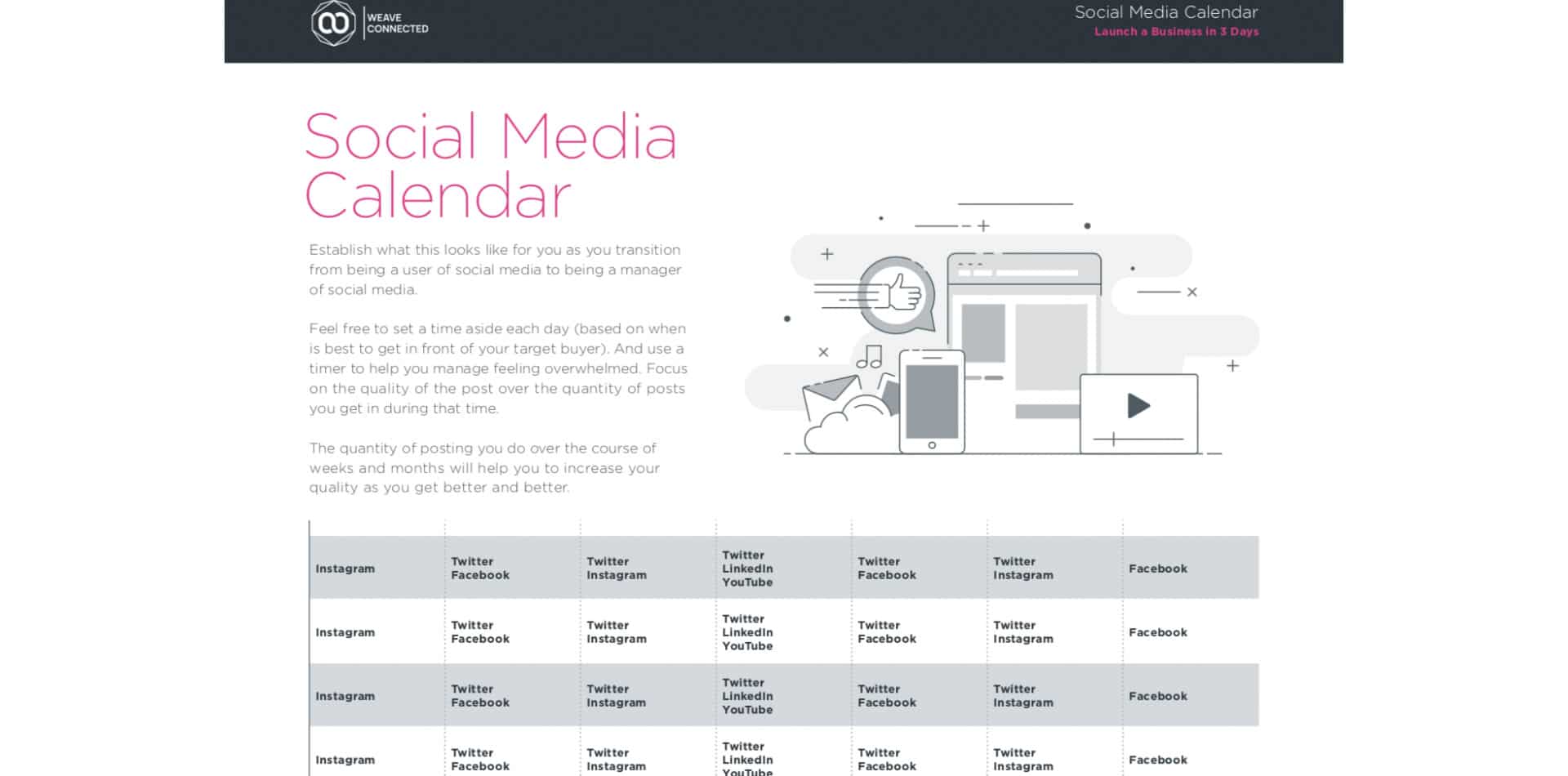Facebook
Instagram
Linkedin
Twitter
TikTok
Snap Chat
YouTube
Pinterest
There’s a lot. What’s even harder is that you just got done building a website, but are you really online if you don’t have social?…. You need to be wherever your target buyer is. Refresh your memory from when you were creating your business plan. Knowing what you know about your buyer, where are they going to be? Remember, this is not where YOU or your friends or family would be. And the good news is this means you’ll be able to quickly identify one and start there. You do not need to tackle all forms of social media in the beginning.
Things to know when starting
Facebook is used the most. It has the most users, logins, impressions, etc. That can be both a strength and a weakness. No matter what, you’ll want to create a facebook business page. This could grow to include private groups some day, but this way, if people search for you, they can find you.
Instagram is the simplest visually. Make sure your images get people to stop scrolling. Good, quality content that looks good will do that. Remember, pretty food tastes better. Presentation is key. But, luckily, you established all of that when you built your style guide.
Twitter is the most simple. But it’s the fastest moving. Twitter will help you build your community with other people. This is particularly good when you’re a b2c business.
LinkedIn is like Facebook, but for businesses and professionals. Here you can build your community with other businesses, which is particularly good for b2b businesses.
Start strong somewhere. Nail and scale. How do you eat a whale? One bite at a time. You don’t want to overwhelm yourself. Having one established social media platform is just fine for the challenge.
You can also set a phased approach. Start with the platform that will get the most targeted traffic for your specific buyer. Then work out from there.
Quality and Quantity
Stick to your style guide. When we said your style guide would help you be proactive instead of reactive, this is what we meant. We were helping you think upstream to things like social media. Stick to that business personality and your defined style. Don’t ever feel forced to post. Consumers today love authenticity. We love connected to a brand and to the individuals behind it. So don’t be afraid to share about yourself as well (to the extent that makes sense for you).
It may feel like you’ve done so much, but think about what other people are seeing. Do they see your day to day? Most people aren’t checking every platform every day. So they’re not seeing every post you make. Most people aren’t visiting you every day. Providing them with a “peak in the life of [your name here]” is something everyone is curious about. Another thing we’ll always repeat: be authentic.
When you post, make sure there’s a value ad and brand consistency. Which means that it’s totally ok to re-post something. The most important thing is engagement. Engagement over followers. No matter the platform.
Engagement comes from good content (eye catching), a caption that brings people in, and utilizing the tools on each platform that get followers to participate (in Instagram, things like Polls and Questions). Consistency will contribute to engagement because it gets your posts to the top more often, which will lead to higher views and a higher ikelihood of engagement if you have everything else right.
Ultimately, you want both quality and quantity. Use quantity to work towards quality, knowing that the more you do it the better you’ll get.
Sample Template

Other Resources
Editing photos:
- Tezza
- Bisco
- Pixart
- Adobe Lightroom
Editing videos:
- In shot
Instagram specifically
- Snug-helps you plan out your feed. Does not post for you.
Design & graphic creation
- Adobe Spark- they have so many easy templates and tools to help you make beautiful posts. You can get premium access, but the free stuff is wonderful. You can add your logo and your codes for your colors and use them every time.
